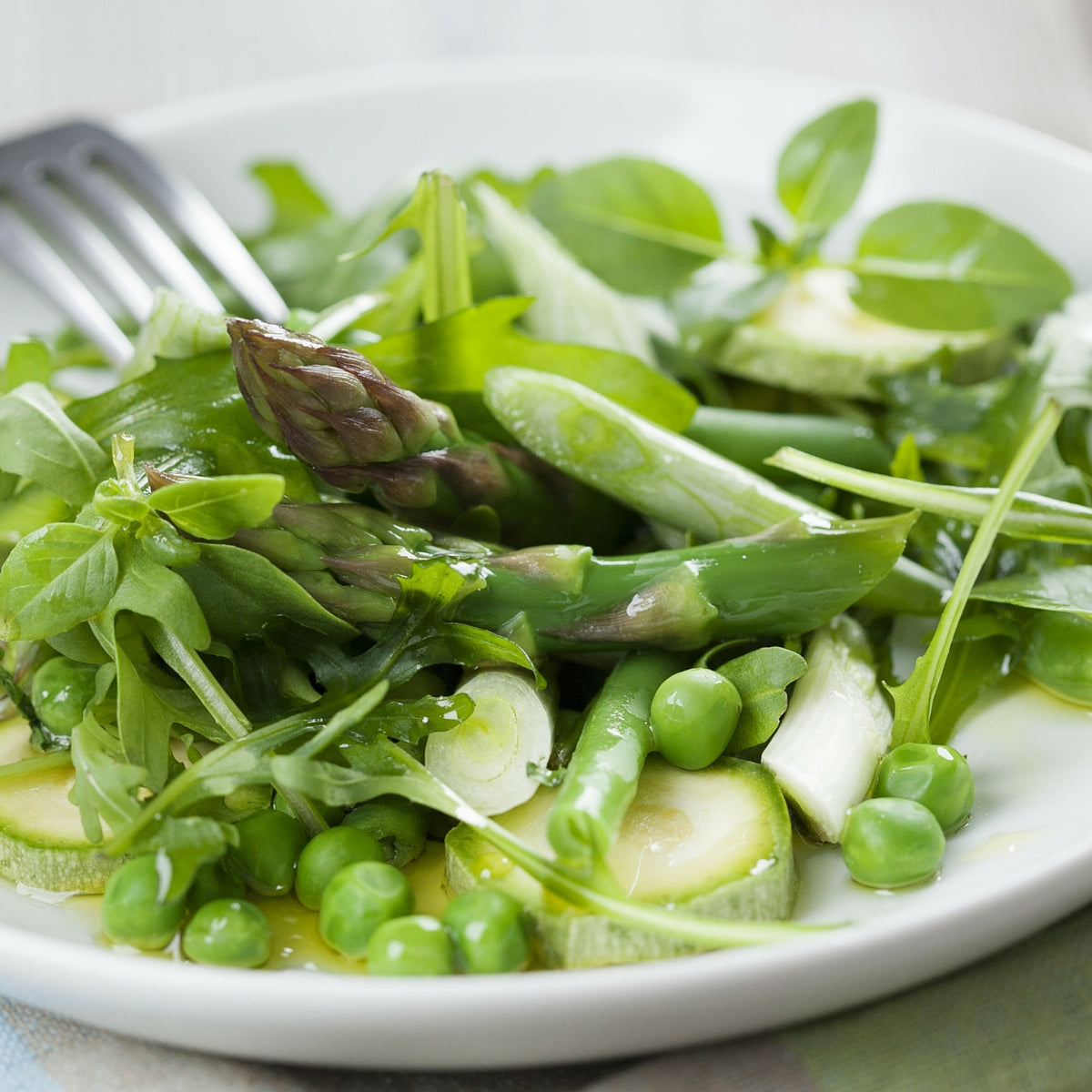If you suffer with digestive issues like bloating, abdominal pain and irregular bowel habits, it's time to learn more about your triggers.
- We explain the Low FODMAP Diet, a potentially breakthrough option for IBS symptoms - it's having success in over 70% of patients.
- Give your digestive system a temporary break to get back in balance.
- Get rid of the bloat, gas and cramping pains and improve your ability to absorb nutrients.

Let’s guess – you’ve already tried cutting out wheat and dairy with varying success? These are the most common triggers for digestive intolerances or sensitivities in the western world. So why does a seemingly innocent healthy salad or a piece of fruit make you feel like you’re 6 months pregnant?
This is where FODMAPs come in, it’s a term to describe a group of dietary sugars that ferment, draw water into the gut and feed the intestinal bacteria, causing bloating and digestive disruption in some people. The research team at Monash University in Melbourne developed the Low FODMAP Diet after discovering that this group of carbohydrates contribute to IBS and intestinal problems. The diet suggests reducing specific foods for a period of 2-6 weeks before gradually reintroducing them. FODMAP stands for Fermentable Oligo- Di- and Mono-saccharides and Polyols. If these terms mean nothing to you ... here are some examples of foods that contain them:
What are FODMAPs?
- Fructose in excess of glucose – found in certain fruits and honey
- Lactose – found in milk and milk products
- Oligo-saccharides - fructans / fructo-oligosaccharides (FOS) found in fibrous vegetables, agave, asparagus, onions, leeks, wheat, rye
- Oligo-saccharides - galactans / galacto-oligosaccharides (GOS) – found in pulses and legumes such as chickpeas
- Sugar Polyols such as sorbitol, mannitol and xylitol – found in some fruits and vegetables and often added as artificial sweeteners in products like toothpastes and chewing gum
The full list of foods to avoid and appropriate alternatives may be sourced from Monash University in Melbourne, where the diet was first developed, check out their resources here.
Why do some people suffer from FODMAP intolerances and others don’t?
If you’re intolerant or sensitive to certain foods, it’s likely you have a bacterial imbalance in the gut. The small intestine should have a much lower level of bacteria than in the large intestine, so when bacteria overgrow in this part of the bowel, absorption of nutrients is affected and IBS symptoms occur. Removing foods that feed bacteria from your diet i.e. the sugars, starches and insoluble fibre found in FODMAPs, can kill off symptom-causing bacteria. Some people may need further support in terms of using antimicrobial supplements such as olive leaf extract and a probiotic that boosts the protective bacteria in the gut – choose one that doesn’t contain FOS (fructooligosaccharides) or inulin which are classed as FODMAPs.
Monash University states that there are some FODMAPs that we all malabsorb! Humans do not have enzymes to breakdown Oligos- fructans/FOS or GOS, so these are broken down by bacteria in our small intestine. In most people this doesn’t cause symptoms, but for those suffering with IBS, it is recommended to reduce them. Around 30-40% of healthy individuals and those who suffer from digestive issues malabsorb excess fructose.
For digestive health, try our chlorella powder or tablets, to maintain normal colonic function by benefitting the balance of gut flora – our healthy bacteria in the bowel.
Our take on FODMAPs
We’re always cautious when it comes to restricting your intake of some foods, particularly those that are rich in nutrients. However, the diet works by reducing FODMAPs for a limited period: 2-6 weeks, in which time your digestive system takes a rest and your gut flora has the chance to return to normal, i.e. any overgrowth of bad bacteria is not being fed with sugars and fibres that help it flourish.
Ideally, this diet should be undertaken with some professional guidance, for instance from a nutritionist or naturopath, who can order breath tests to check your absorption of fructose, lactose and sorbitol, as well as determining whether you have an overgrowth of bacteria in your small intestine and give you an appropriate supplement programme.
After 2-6 weeks, you can begin a slow reintroduction of foods that you have removed to work out the foods and quantities that will work for you in the long term. The break-period allows your positive bacteria to return to normal, improving your ability to digest and absorb FODMAPs.


